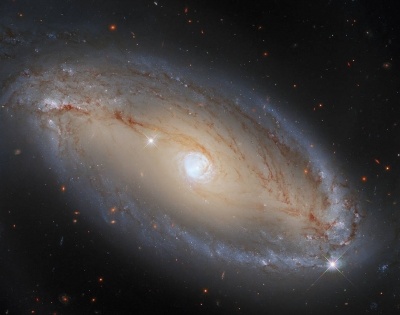Hubble spots spiral galaxy with celestial eye
By IANS | Published: October 4, 2021 01:09 PM2021-10-04T13:09:04+5:302021-10-04T13:25:51+5:30
Washington, Oct 4 The Hubble Space Telescope, an international cooperation between NASA and ESA (European Space Agency), has ...

Hubble spots spiral galaxy with celestial eye
Washington, Oct 4 The Hubble Space Telescope, an international cooperation between NASA and ESA (European Space Agency), has detected a spiral galaxy around 130 million light-years from Earth that showcases a celestial eye.
Hubble's Wide Field Camera 3 (WFC3) captured the galaxy NCG 5728 which appears to be an elegant and luminous, an ESA statement said.
WFC3 is extremely sensitive to visible and infrared light and thus beautifully captured the regions of NGC 5728 that are emitting light at those wavelengths.
However, there are many other types of light that galaxies such as NGC 5728 emit, which the WFC3 cannot see.
NGC 5728 is also a monumentally energetic type of galaxy, known as a Seyfert galaxy.
Powered by their active cores, Seyfert galaxies are an extremely energetic class of galaxies known as active galactic nuclei (AGNs). This AGNs at its core shines bright due to the gas and dust hurled around its central black hole.
There are many different types of AGNs, but Seyfert galaxies are distinguished from other galaxies with AGNs because the galaxy itself is clearly seen, ESA said.
Other AGNs, such as quasars, emit so much radiation that it is almost impossible to observe the galaxy that houses them.
In the new image "NGC 5728 is clearly observable, and at visible and infrared wavelengths it looks quite normal", ESA said.
"It is fascinating to know that the galaxy's center is emitting vast amounts of light in parts of the electromagnetic spectrum that WFC3 just isn't sensitive to! Just to complicate things, the AGN at NGC 5728's core might actually be emitting some visible and infrared light but it may be blocked by the dust surrounding the galaxy's core," the statement said.
Disclaimer: This post has been auto-published from an agency feed without any modifications to the text and has not been reviewed by an editor
Open in app